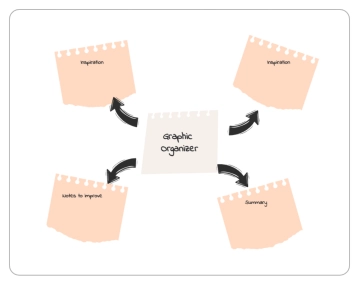Free IT Strategy Plan

I. Introduction
In today's dynamic business environment, a well-defined IT strategy is essential for achieving organizational goals and sustaining long-term success. At [Your Company Name], we recognize that technology is not merely a support function but a pivotal driver of our business operations and strategic initiatives. Our IT strategy is designed to align with our corporate objectives, ensuring that every technology investment and initiative contributes to our overall mission and vision. This plan will guide our IT infrastructure, resources, and projects, enabling us to meet the evolving needs of our business and respond effectively to market changes.
To enhance operational efficiency and maintain a competitive edge, our IT strategy focuses on integrating advanced technologies, optimizing processes, and leveraging data-driven insights. We aim to create a robust IT framework that supports innovation, drives productivity, and provides a seamless experience for our stakeholders. By aligning our IT strategy with our corporate goals, [Your Company Name] will be well-positioned to navigate technological advancements, capitalize on emerging opportunities, and sustain our leadership in the market. This comprehensive plan outlines the key components and initiatives that will drive our IT efforts and support our strategic vision.
II. Vision and Mission
Our IT vision and mission articulate the fundamental goals and guiding principles that shape our technology strategy. These statements provide a clear direction for our IT initiatives, ensuring that every effort is aligned with our broader business objectives and contributes to our growth and success.
Vision: To be a leader in leveraging technology to drive business innovation and efficiency.
Mission: To deliver reliable, scalable, and secure IT services that support our business's strategic goals and foster innovation.
III. Strategic Objectives
Our strategic objectives outline the key areas where IT will drive significant impact. By focusing on these goals, we aim to advance our digital capabilities, streamline operations, and ensure robust security while promoting innovation and meeting regulatory standards. These objectives will guide our IT initiatives and investments.
Enhance digital transformation efforts.
Improve operational efficiencies.
Strengthen cybersecurity measures.
Foster innovation and development.
Ensure regulatory compliance.
IV. SWOT Analysis
The SWOT Analysis evaluates our IT capabilities by identifying strengths, weaknesses, opportunities, and threats. This assessment provides valuable insights into our current position and highlights areas for improvement. By understanding these factors, we can develop targeted strategies to leverage our strengths, address weaknesses, capitalize on opportunities, and mitigate risks.
Strengths | Weaknesses |
|---|---|
|
|
|
|
|
|
Opportunities | Threats |
|
|
|
|
|
|
V. Strategic Initiatives
To achieve our IT strategy goals, [Your Company Name] is committed to executing the following strategic initiatives. Each initiative is designed to address our current needs, leverage emerging technologies, and support our long-term business objectives.
1. Implement Cloud-Based Solutions: Moving to cloud-based solutions will enhance our flexibility, scalability, and cost-effectiveness. By adopting cloud infrastructure, we will streamline operations, reduce hardware dependencies, and improve data accessibility across the organization. This transition will also support remote work capabilities and provide disaster recovery options, ensuring business continuity.
2. Upgrade Legacy Systems: Upgrading our legacy systems is critical to maintaining operational efficiency and compatibility with modern applications. We will prioritize the modernization of outdated technologies to improve performance, reduce maintenance costs, and enhance system integration. This initiative will involve evaluating current systems, selecting appropriate upgrade paths, and implementing new solutions with minimal disruption to ongoing operations.
3. Enhance Cybersecurity Protocols: Strengthening our cybersecurity measures is essential to protecting our digital assets and maintaining trust with stakeholders. We will invest in advanced security technologies, conduct regular vulnerability assessments, and update our incident response plans. This initiative will also include employee training on security best practices to mitigate human-related risks and ensure comprehensive protection against evolving cyber threats.
4. Invest in AI and Data Analytics: Leveraging artificial intelligence (AI) and data analytics will enable us to gain valuable insights, automate processes, and make data-driven decisions. We will explore AI-driven tools for predictive analytics, customer insights, and operational efficiencies. Investing in these technologies will enhance our ability to respond to market trends and optimize business strategies.
5. Drive Digital Transformation Projects: To stay competitive, we will actively pursue digital transformation initiatives that integrate new technologies and innovative practices into our operations. This includes developing digital platforms, automating workflows, and enhancing customer experiences. These projects will drive growth, improve agility, and position [Your Company Name] as a leader in digital innovation.
These strategic initiatives will collectively advance our IT capabilities, aligning technology investments with our business goals and preparing us for future challenges and opportunities.
VI. Resource Allocation
Effective resource allocation is fundamental to the success of our IT strategy. Our budget will prioritize cybersecurity, digital transformation, and system upgrades.
Cybersecurity: | 30% |
Digital Transformation: | 25% |
System Upgrades: | 20% |
Research and Development: | 15% |
Training and Development: | 10% |
VII. Implementation Roadmap
The implementation roadmap provides a detailed plan for achieving our strategic objectives through a series of key milestones and timelines. This roadmap outlines the quarterly targets for each strategic initiative, ensuring that our efforts are well-coordinated and aligned with our overall goals. By setting clear milestones, we can effectively track progress, allocate resources, and ensure timely execution of our IT strategy.
Quarter | Initiative | Milestone |
|---|---|---|
Q1 | Cloud-based solutions | Complete migration of critical applications |
Q2 | System Upgrades | Upgrade 50% of legacy systems |
Q3 | Cybersecurity Enhancement | Implement advanced threat detection |
Q4 | AI and Data Analytics | Deploy initial data analytics platform |
Performance Metrics
To measure the success of our IT strategy, we will monitor the following key performance indicators (KPIs):
System uptime and reliability
Incidence of cybersecurity breaches
ROI on digital transformation projects
User satisfaction scores
Compliance with regulatory standards
VIII. Conclusion
Implementing a robust IT strategy is an ongoing process that demands vigilance, adaptability, and continuous improvement. At [Your Company Name], we recognize that technology is a dynamic field that evolves rapidly, and our IT strategy must evolve alongside it. The initiatives outlined in this plan are designed to address both current needs and future opportunities, positioning us to leverage technology as a driver of business success. Our commitment to enhancing digital capabilities, optimizing operations, and safeguarding our digital assets reflects our dedication to achieving our strategic goals.
As we execute this IT strategy, we will regularly review and assess our progress to ensure alignment with our organizational objectives. This proactive approach will enable us to respond to emerging trends, address potential challenges, and seize new opportunities. By maintaining a focus on innovation, efficiency, and security, [Your Company Name] will build a resilient and forward-looking IT infrastructure that supports our growth and sustains our competitive advantage. Our IT strategy is not merely a roadmap but a living framework that will guide our technological advancements and contribute to our long-term success.
- 100% Customizable, free editor
- Access 1 Million+ Templates, photo’s & graphics
- Download or share as a template
- Click and replace photos, graphics, text, backgrounds
- Resize, crop, AI write & more
- Access advanced editor
The IT Strategy Plan Template from Template.net is fully customizable and editable, allowing you to craft a detailed strategy that aligns with your business goals. Easily editable in our Ai Editor Tool, this template helps streamline your IT planning process for maximum efficiency and clarity.
You may also like
- Finance Plan
- Construction Plan
- Sales Plan
- Development Plan
- Career Plan
- Budget Plan
- HR Plan
- Education Plan
- Transition Plan
- Work Plan
- Training Plan
- Communication Plan
- Operation Plan
- Health And Safety Plan
- Strategy Plan
- Professional Development Plan
- Advertising Plan
- Risk Management Plan
- Restaurant Plan
- School Plan
- Nursing Home Patient Care Plan
- Nursing Care Plan
- Plan Event
- Startup Plan
- Social Media Plan
- Staffing Plan
- Annual Plan
- Content Plan
- Payment Plan
- Implementation Plan
- Hotel Plan
- Workout Plan
- Accounting Plan
- Campaign Plan
- Essay Plan
- 30 60 90 Day Plan
- Research Plan
- Recruitment Plan
- 90 Day Plan
- Quarterly Plan
- Emergency Plan
- 5 Year Plan
- Gym Plan
- Personal Plan
- IT and Software Plan
- Treatment Plan
- Real Estate Plan
- Law Firm Plan
- Healthcare Plan
- Improvement Plan
- Media Plan
- 5 Year Business Plan
- Learning Plan
- Marketing Campaign Plan
- Travel Agency Plan
- Cleaning Services Plan
- Interior Design Plan
- Performance Plan
- PR Plan
- Birth Plan
- Life Plan
- SEO Plan
- Disaster Recovery Plan
- Continuity Plan
- Launch Plan
- Legal Plan
- Behavior Plan
- Performance Improvement Plan
- Salon Plan
- Security Plan
- Security Management Plan
- Employee Development Plan
- Quality Plan
- Service Improvement Plan
- Growth Plan
- Incident Response Plan
- Basketball Plan
- Emergency Action Plan
- Product Launch Plan
- Spa Plan
- Employee Training Plan
- Data Analysis Plan
- Employee Action Plan
- Territory Plan
- Audit Plan
- Classroom Plan
- Activity Plan
- Parenting Plan
- Care Plan
- Project Execution Plan
- Exercise Plan
- Internship Plan
- Software Development Plan
- Continuous Improvement Plan
- Leave Plan
- 90 Day Sales Plan
- Advertising Agency Plan
- Employee Transition Plan
- Smart Action Plan
- Workplace Safety Plan
- Behavior Change Plan
- Contingency Plan
- Continuity of Operations Plan
- Health Plan
- Quality Control Plan
- Self Plan
- Sports Development Plan
- Change Management Plan
- Ecommerce Plan
- Personal Financial Plan
- Process Improvement Plan
- 30-60-90 Day Sales Plan
- Crisis Management Plan
- Engagement Plan
- Execution Plan
- Pandemic Plan
- Quality Assurance Plan
- Service Continuity Plan
- Agile Project Plan
- Fundraising Plan
- Job Transition Plan
- Asset Maintenance Plan
- Maintenance Plan
- Software Test Plan
- Staff Training and Development Plan
- 3 Year Plan
- Brand Activation Plan
- Release Plan
- Resource Plan
- Risk Mitigation Plan
- Teacher Plan
- 30 60 90 Day Plan for New Manager
- Food Safety Plan
- Food Truck Plan
- Hiring Plan
- Quality Management Plan
- Wellness Plan
- Behavior Intervention Plan
- Bonus Plan
- Investment Plan
- Maternity Leave Plan
- Pandemic Response Plan
- Succession Planning
- Coaching Plan
- Configuration Management Plan
- Remote Work Plan
- Self Care Plan
- Teaching Plan
- 100-Day Plan
- HACCP Plan
- Student Plan
- Sustainability Plan
- 30 60 90 Day Plan for Interview
- Access Plan
- Site Specific Safety Plan





























